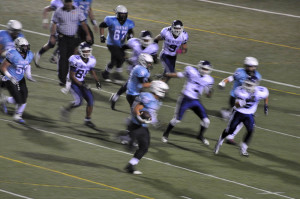 The Los Angeles Times this week came out with an article on a tentative agreement between the L.A. Unified SD and the teachers’ union to use student test scores to evaluate the performance of teachers – http://latimesblogs.latimes.com/lanow/2012/11/la-unified-teachers-union-agree-on-teachers-evaluations.html .
The Los Angeles Times this week came out with an article on a tentative agreement between the L.A. Unified SD and the teachers’ union to use student test scores to evaluate the performance of teachers – http://latimesblogs.latimes.com/lanow/2012/11/la-unified-teachers-union-agree-on-teachers-evaluations.html .
and
Friday’s Orange County Register contained an article by Scott Martindale about students failing the California Physical Fitness Test – http://www.ocregister.com/news/students-379296-percent-school.html .
To me, these articles are related. Both of them revolve around issues which seem to be societal in nature rather than the responsibility of an individual – the teacher. 
The Register’s article on fitness seems to realize this as there is nothing about relating a student’s performance on the test to his or her physical education teacher. Weight and fitness are rightly seen as problems which cannot be attributed to or overcome by individual teachers. Although if we are going to hold English, Math and Science teachers responsible for the test scores of their students and, at least partially, evaluate them based on their students’ test scores, shouldn’t we hold physical education teachers responsible for their students’ scores on the physical fitness test? (I have no idea on how we use student test scores to evaluate teachers of other subjects.)
But, rather than using standardized tests to evaluate teachers, I’d like to see subject matter pre- and post-tests used to do the evaluations.
Seemingly ages ago I gave my social studies students pre- and post- geography tests. These were fifty question multiple-choice tests of my own design. They covered the geographic knowledge and skills related to being able to understand the seventh grade social studies curriculum. I gave the test to them at the start of the academic year and at the end of the academic year. The first test did not count on their grade, unless it was higher than their first grade report average; the test at the end of the year counted on their last grade report, regardless of their score.
These tests allowed me to see whether or not my students learned what I thought they should learn and, what I needed to do better at teaching.
If you are going to evaluate teachers based on the test scores of their students, you should base the tests on what the teacher is supposed to have taught the students.
Here is the seventh grade curriculum. Test to see what they know at the start of the year; test again to see what they have learned. Did the students learn what they were supposed to have learned; did the teacher adequately teach what he or she was supposed to have taught? Evaluate the teacher based on factors that the teacher can control; do not evaluate the teacher based on factors beyond that teacher’s ability to control.
Don’t evaluate my ability to teach seventh graders how to use Word, Excel and Powerpoint by the girl who just came from Poland and doesn’t speak English (The counselor says she can just sit at the computer and type.); don’t evaluate my ability to teach seventh grade social studies on the student who reads at less than second grade level and speaks Spanish at home because neither of the parents speak English (“Joe, we don’t have anyplace else to put her; just put her next to another student who speaks Spanish.”).
An individual teacher cannot solve society’s problems; he can do his job and teach what he is supposed to teach – evaluate him on how he does that job. And, when he has time, he’ll do what he can to help those who need it most, even if he can’t speak their language.
12.2.2012









